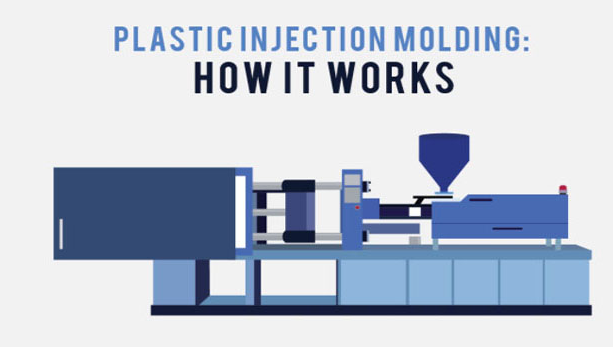
The duration of an injection molding cycle, often referred to as the cycle time, can vary widely depending on several factors including the material being used, the complexity of the part, the mold design, and the specific parameters of the injection molding process. Here is a breakdown of the factors that influence injection molding cycle time and an overview of the typical time components involved:
[elementor-template id=”4330″]
Key Factors Influencing Injection Molding Cycle Time
- Material Type:
- Different thermoplastics and thermosetting plastics have varying melting and cooling times.
- Materials with higher melting temperatures or slower cooling rates typically increase cycle time.
- Part Complexity:
- Parts with intricate geometries, thin walls, or detailed features require longer times for filling and cooling.
- Complex parts may also require additional steps such as core pulling or slides, adding to the cycle time.
- Mold Design:
- Molds with efficient cooling systems can significantly reduce cooling time.
- Multi-cavity molds can produce multiple parts per cycle, affecting the overall production time but not the individual cycle time.
- Machine Parameters:
- Injection speed, pressure, and temperature settings can be optimized to minimize cycle time while ensuring part quality.
- Properly maintained machines with precise controls can operate faster and more consistently.
- Cooling Time:
- Cooling time often constitutes the largest portion of the cycle time, especially for parts with thick sections.
- Efficient cooling designs, such as conformal cooling channels, can reduce cooling time.
- Ejection Time:
- The time required to open the mold and eject the part.
- Automated ejection systems can speed up this process compared to manual ejection.
Typical Components of Injection Molding Cycle Time
- Injection (Filling) Time:
- The time it takes to fill the mold cavity with molten plastic.
- Usually ranges from 1 to 10 seconds, depending on the part size and complexity.
- Packing (Holding) Time:
- The time during which additional pressure is applied to ensure the mold is completely filled and to compensate for material shrinkage.
- Typically ranges from 1 to 5 seconds.
- Cooling Time:
- The time needed for the part to cool and solidify within the mold.
- This can vary widely, typically ranging from 10 to 60 seconds, or even longer for larger or thicker parts.
- Mold Opening and Part Ejection Time:
- The time required to open the mold and eject the part.
- Generally ranges from 1 to 5 seconds.
- Mold Closing Time:
- The time needed to close the mold and prepare for the next cycle.
- Typically ranges from 1 to 3 seconds.
[elementor-template id=”4331″]
Typical Total Cycle Times
- Simple Parts: For straightforward parts with simple geometries and materials that cool quickly, cycle times can be as short as 10-20 seconds.
- Complex Parts: For parts with intricate designs, thicker sections, or materials that cool slowly, cycle times can range from 30 seconds to several minutes.
Example Calculation of a Cycle Time
Let’s consider a simple example of a plastic part with the following times:
- Injection Time: 5 seconds
- Packing Time: 3 seconds
- Cooling Time: 20 seconds
- Mold Opening and Ejection Time: 3 seconds
- Mold Closing Time: 2 seconds
Total cycle time = Injection Time + Packing Time + Cooling Time + Mold Opening and Ejection Time + Mold Closing Time Total cycle time = 5 + 3 + 20 + 3 + 2 = 33 seconds
Conclusion
The cycle time in injection molding is a crucial factor that directly impacts production efficiency and cost. By understanding and optimizing each component of the cycle time, manufacturers can improve throughput and reduce costs while maintaining high-quality standards for molded parts. Efficient mold design, proper material selection, and optimized machine parameters are key to minimizing cycle time and enhancing overall production performance.
Related Conten: Plastic Blow Molding
 DTG Mould Trade Process |
|
| Quote: | According to sample, drawing and specific requirement. |
|---|---|
| Discussion | Mold material, cavity number, price, runner, payment, etc. |
| S/C Signature | Approval for all the items. |
| Advance | Pay 50% by T/T |
| Product Design Checking | We check the product design. If some position is not perfect, or can not be done on the mould, we will send customer the report. |
| Mold Processing | Send report to customer once each week |
| Mold Testing | Send trial samples and try-out report to customer for confirmation |
| Mold Modification | According to customer’s feedback. |
| Balance Settlement | 50% by T/T after the customer approved the trial sample and mould quality. |
| Delivery | Delivery by sea or air. The forwarder can be designated by your side. |
 |
|

